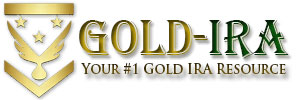Introduction
Investing in a Gold Individual Retirement Account (IRA) has gained significant traction as a popular strategy for securing retirement savings. With economic uncertainties and fluctuating market conditions, many investors turn to gold and other precious metals as a hedge against inflation and a means of ensuring long-term financial stability. This article explores the top gold IRA investment options available to bolster your retirement portfolio.
Understanding Gold IRAs
A Gold IRA is a self-directed retirement account that allows individuals to invest in physical gold, silver, platinum, and palladium instead of traditional stocks or bonds. Gold IRAs offer tax advantages similar to regular IRAs but provide the added benefit of holding tangible assets. They serve as a powerful diversification tool in an investment portfolio, potentially reducing risk and increasing the likelihood of attaining financial goals.
Benefits of Gold IRAs
Gold IRAs are considered a safe haven for investors, providing a buffer against economic downturns. The intrinsic value of gold and its historical performance make it an attractive choice for retirement planning. Some key benefits include:
– Inflation Hedge: Gold typically appreciates in value during inflationary periods, protecting purchasing power.
– Stability: Its scarcity and universal acceptance provide stability against volatile market trends.
– Diversification: Adding gold to a retirement portfolio spreads risk and mitigates losses from other investments.
Types of Gold IRA Investment Options
Investors can choose from several gold-related investment options for their IRA. Each option has unique features, advantages, and disadvantages. Here are the primary types of investments available:
Physical Gold
Investing in physical gold involves purchasing coins or bullion bars. Commonly accepted IRA-approved coins include the American Gold Eagle, Canadian Gold Maple Leaf, and Australian Gold Kangaroo. Bullion bars from recognized refiners also qualify for IRAs.
– Advantages: Physical gold provides direct ownership and control, which many investors find reassuring.
– Disadvantages: Storage and insurance costs can be a downside, requiring secure, IRS-approved depositories.
Gold Exchange-Traded Funds (ETFs)
Gold ETFs offer a way to invest in gold without owning the physical metal. These financial products track the performance of gold prices and are traded on stock exchanges.
– Advantages: Liquid, easily tradable, and require no storage fees.
– Disadvantages: Terms of ETFs can include management fees and lack the tangible asset comfort.
Gold Mining Stocks
Investing in shares of gold mining companies is another IRA option. This investment indirectly exposes portfolios to gold prices without owning the physical metal.
– Advantages: Potential for dividends that physical gold cannot provide.
– Disadvantages: Stock performance ties to corporate activities and broader market conditions, introducing higher volatility.
Precious Metal Mutual Funds
Precious metal mutual funds pool investors’ money to buy a diversified portfolio of gold-related assets, including mining stocks and other companies in the precious metals industry.
– Advantages: Diversification within the sector, professionally managed.
– Disadvantages: May involve higher management fees, and performance is subject to industry and market risks.
Choosing the Right Gold IRA Custodian
Selecting a reliable custodian is crucial when establishing a Gold IRA. Custodians are responsible for facilitating gold transactions and secure storage. Consider the following criteria:
– Reputation: Research and choose custodians with excellent reputations and customer reviews.
– Fees: Compare fee structures, including setup, annual, and storage fees.
– Customer Service: Prioritize custodians known for transparent communication and responsive support.
Case Study: Successful Gold Investment for Retirement
Consider the case of Jane Doe, a retiree who diversified her portfolio with a Gold IRA at the beginning of 2010. Over a decade, gold prices rose from approximately $1,100 per ounce to over $1,700 per ounce. Jane’s gold investments acted as a financial cushion during market downturns, increasing her retirement fund’s resilience against economic shocks.
Conclusion
Gold IRAs present a compelling option for investors seeking stability and protection in their retirement portfolio. Physical gold, ETFs, mining stocks, and mutual funds offer diverse pathways for incorporating this precious metal into retirement strategies. Conduct thorough research, evaluate investment objectives, and consult financial professionals to tailor your Gold IRA strategy for long-term financial security. Diversifying with precious metals can ultimately enhance your ability to weather economic uncertainties and safeguard your future.
Follow this link to discover best gold ira investment.
